Part III: The Dorat
Road
|
Several
of the locals pointed us to the Dorat road for good
herping. A bit of a drive south and we found the
road. As we neared the turnoff, we could see
stormclouds ahead and as we arrived, we could see that
it had rained a bit just prior to our arrival. This
was a good sign, as rain brings out the herps. These
were the first rains after the dry, so our timing was
perfect. Anticipation was high for the night, and we
started out well just before the sun went down.
We stopped near the start of the road to check
some tin while the sun was still out. We found a nice
dragon species, which I have tentatively identified as
a female swamplands lashtail (Amphibolurus
temporalis) under a large
piece of tin. We then heard Rico call out that he had
something. As we got closer, Rico had the tail of
something that was most of the way down a burrow.
Closer inspection revealed the spiny tail of a goanna,
but it was difficult to tell what species. After a
quick dig, Rico had his prize and washing it off in a
little rainwater revealed the species (which
incidentally was what I had guessed it to be), a
yellow-throat goanna (Varanus baritji)! It was
a very nice individual with a highly reduced pattern
and a grey stripe down the back. I was very excited
about this find! You could tell it was the end of the
dry, as this little goanna was a bit skinny. After a
photoshoot, the monitor was released under the tin it
was found under and we headed out to do a bit of
cruising on the Dorat.
|
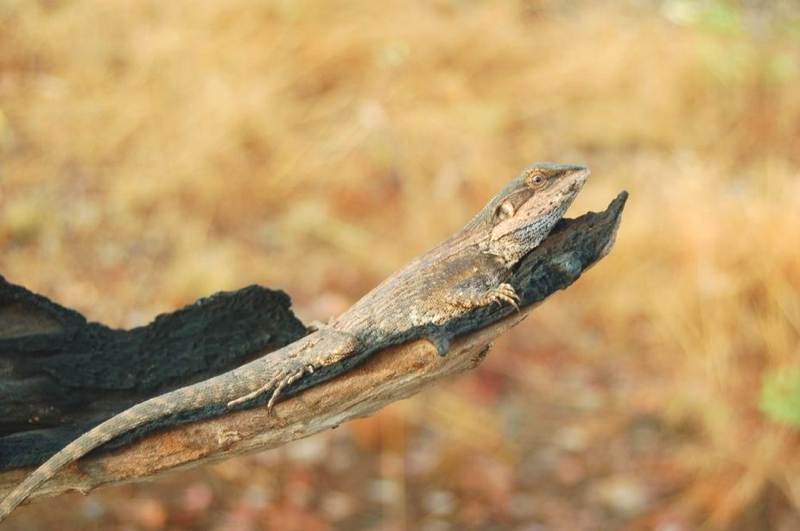
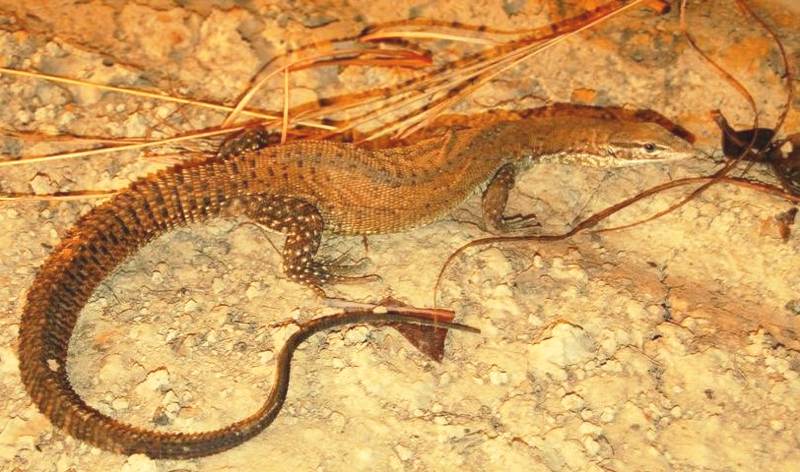
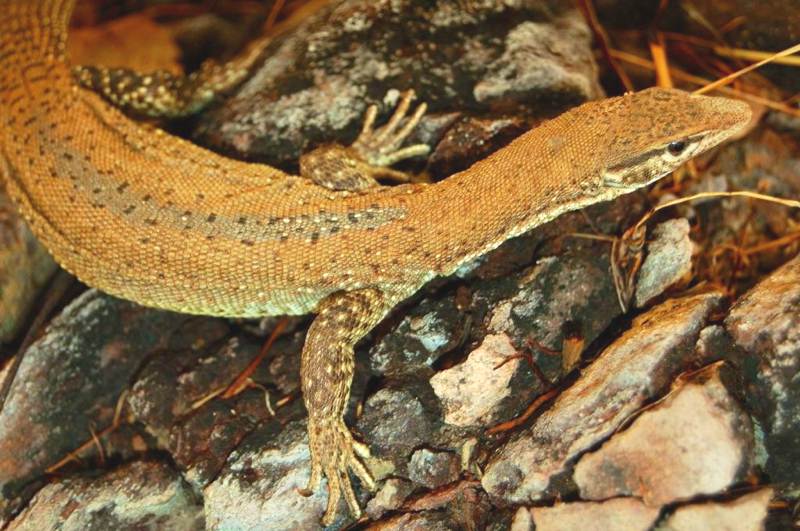
|
Cruising
is
always a mixed bag, and sometimes it can be very
productive, while at other times you may see nothing.
Fortunately, this night was highly productive!
We noticed a distinct pattern of activity of the
reptiles that were seen. During different times of the
night, different species were observed in a distinct
window of time. First up were the fast moving elapids
and colubrids. The first elapid appeared to be a
Weigel's black snake (Pseudechis weigeli), but
I was later told this was likely an undescribed
species of the black snake family. We saw two
individuals, indicating a healthy population despite
the cane toads that are everpresent. Apparently, this
species is a bit too small for cane toads, so they
persist to reproductive age without being too heavily
affected by the invasive bufo. It was difficult
to get pictures of these flighty snakes, but luckily
we had our "Aussie guide" to wrangle them for
pictures.
|
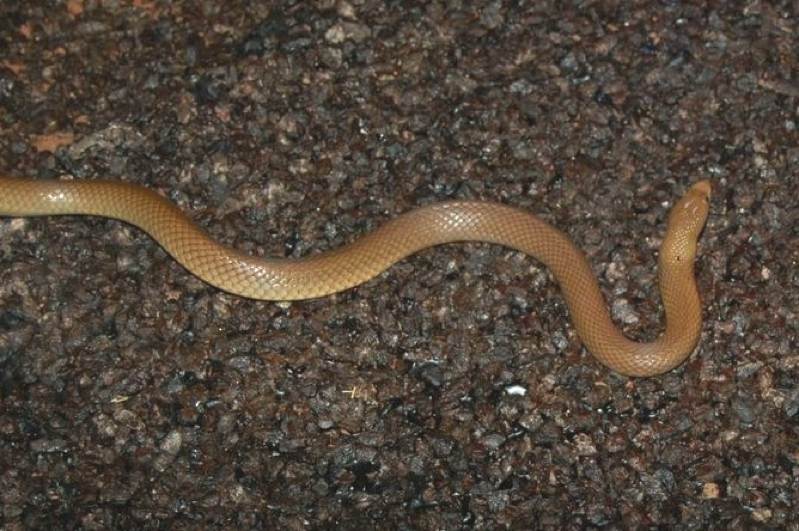
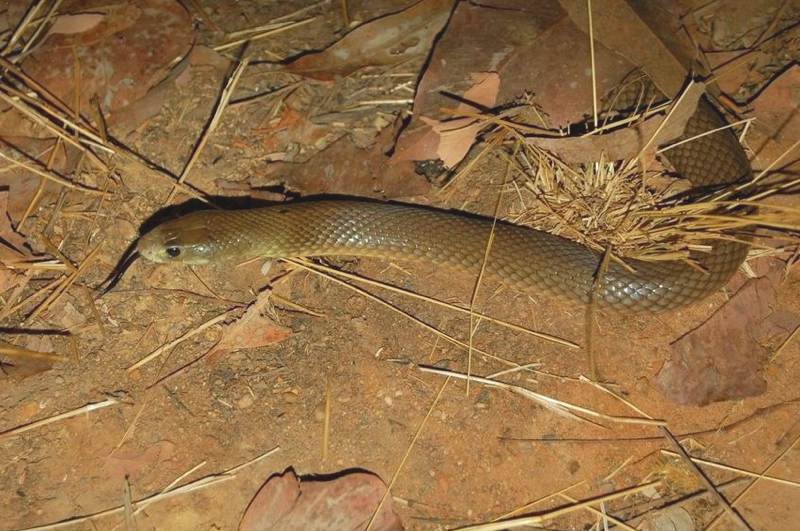
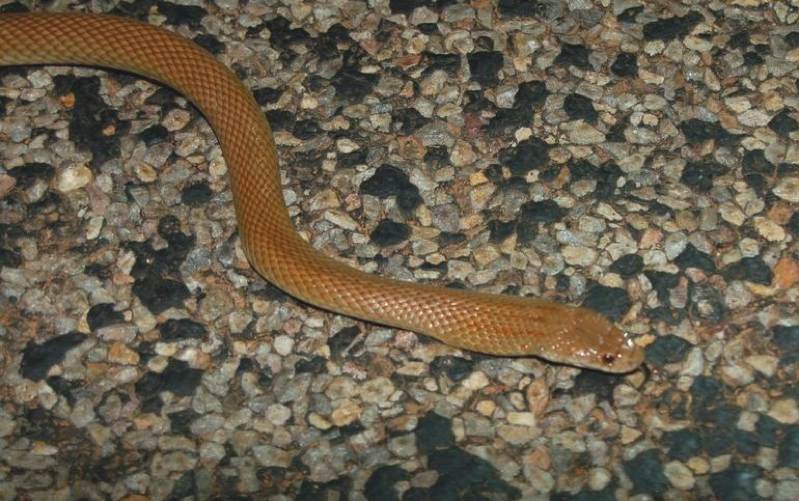
|
Various
small
lizards, including the enigmatic Burton's legless
lizard (Lialis burtonis), as well as the
northern spiny-tailed (Strophurus ciliaris) and
the zigzag velvet gecko (Oedura rhombifer)
geckos, were commonly seen. They were a bit difficult
to spot. I really like the patterns and colors of the
S. ciliaris in the Darwin area and was happy to
find several!
|
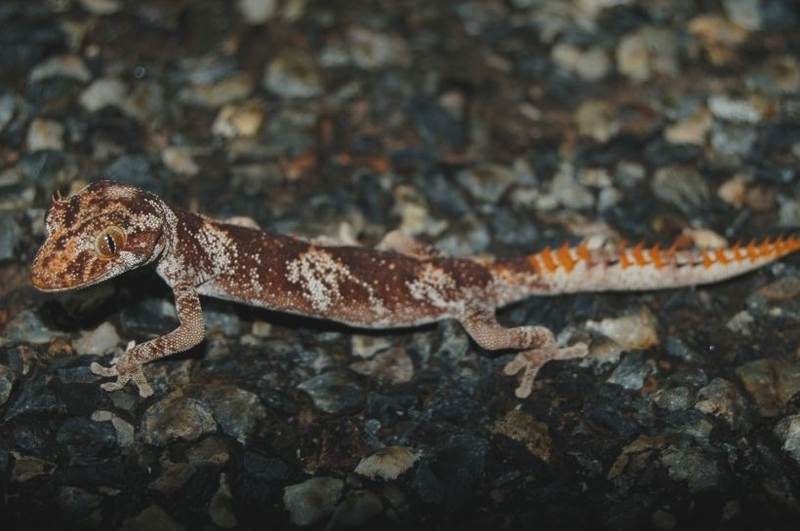
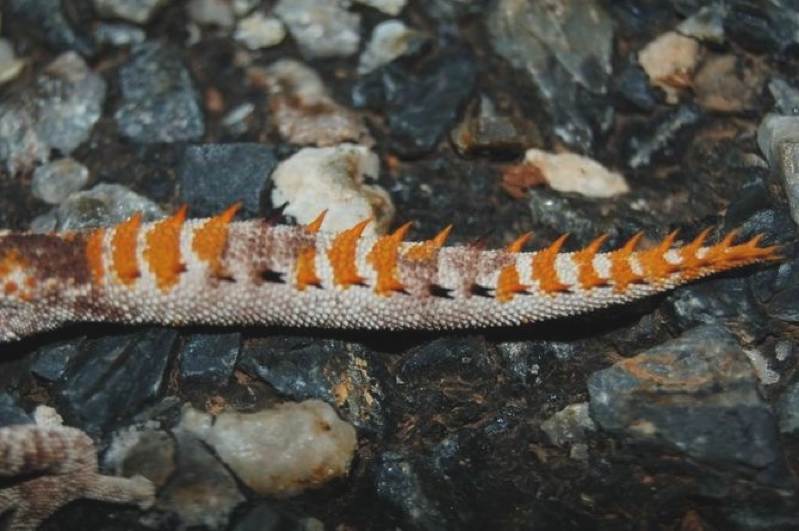
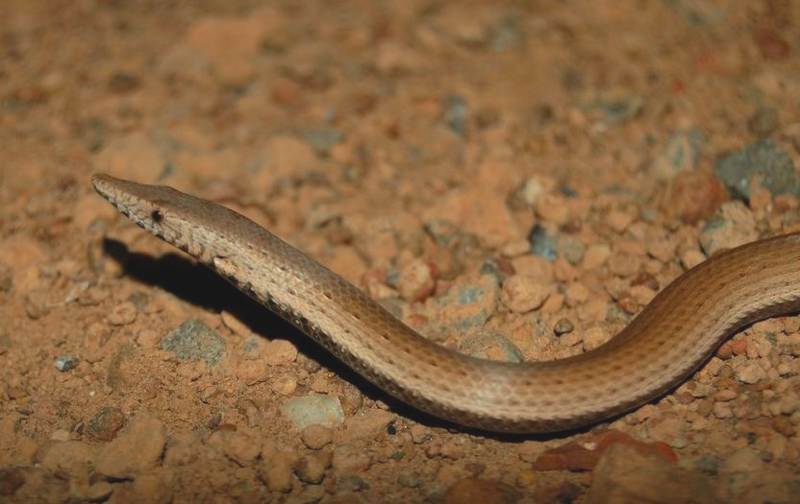
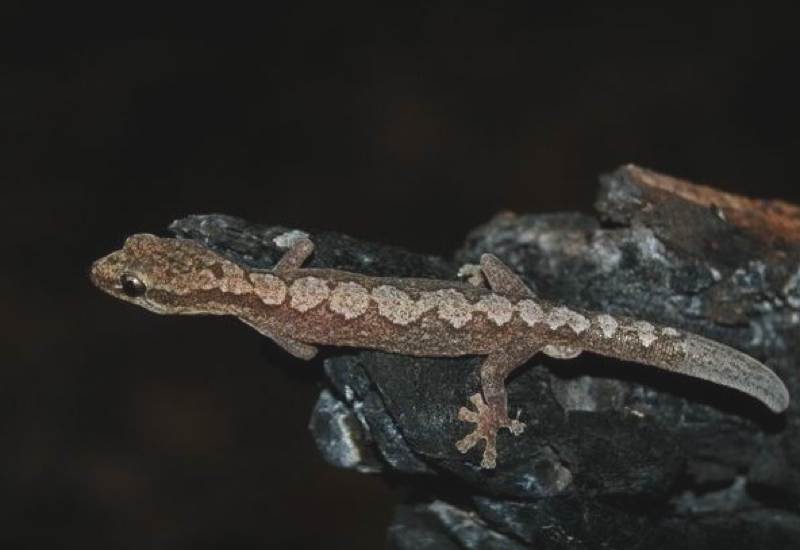
|
The next snake was arguably one of
the most beautiful species of the trip! The brown tree
snakes (Boiga irregularis) are vividly
patterned with red-orange bands, giving them the
common name Night Tiger, a more fitting description
compared with the booring brown tree snake. The night
tiger was found on a long stretch of road that ran off
the Dorat road towards Litchfield NP.
|
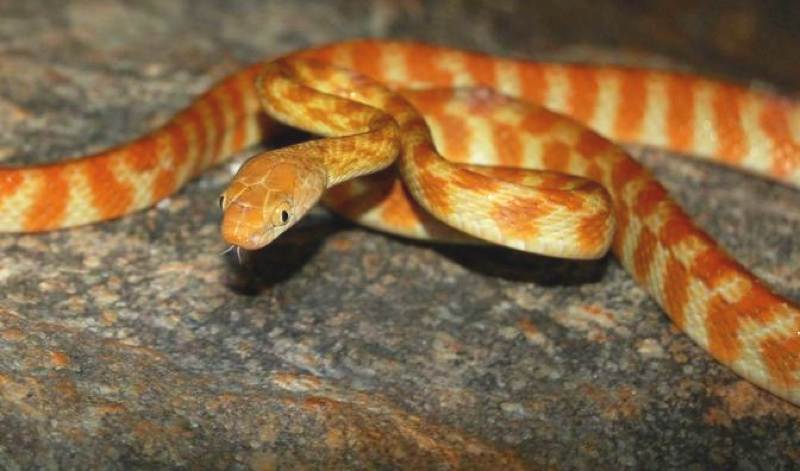
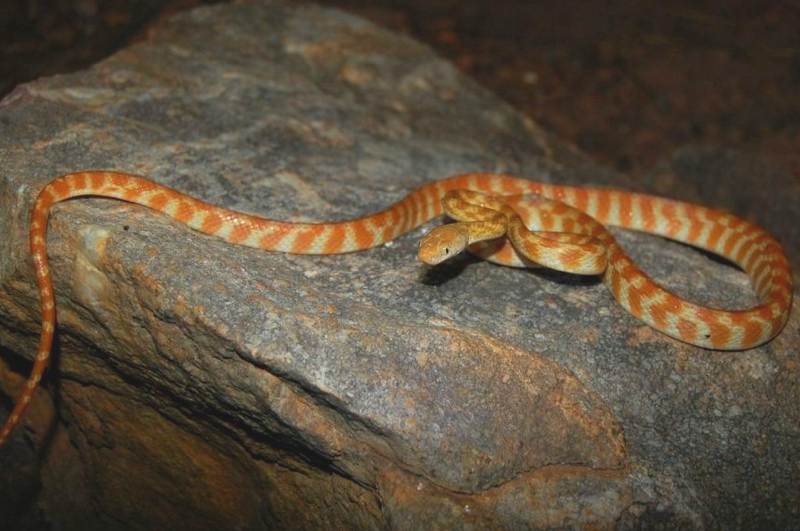
|
The next species to come out on
the road, unfortunately for us stayed a little too
long on the road. We were very sad to find our first
childrens python (Antaresia childreni) dead on the
road (DOR). This individual had a recent meal in it's
stomach, and was likely seeking additional warmth from
the road to aid in digestion. Unfortunately, we would
not see a live childrens python during our trip, but
would find two additional DOR individuals. They appear
to be very common along this stretch of road, but not
too good at avoiding cars. Interestingly, they were
one snake that was very difficult to see, which may be
why they are run over more frequently.
|
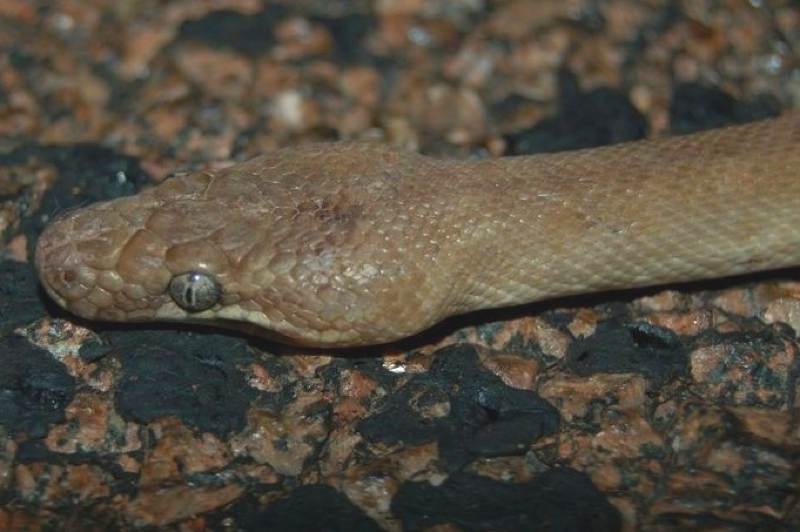
|
|
It was getting pretty late, and we decided to make one
more pass before returning home. That turned out to be
a very good plan. Shortly after
starting our last pass, we stumbled across a beautiful
black headed python (Aspidites
melanocephalus). What a sight! It had
beautiful reddish bands and was a slender young adult.
After a lengthy photo shoot, we watched this
magnificent python crawl off into the scrub.
|
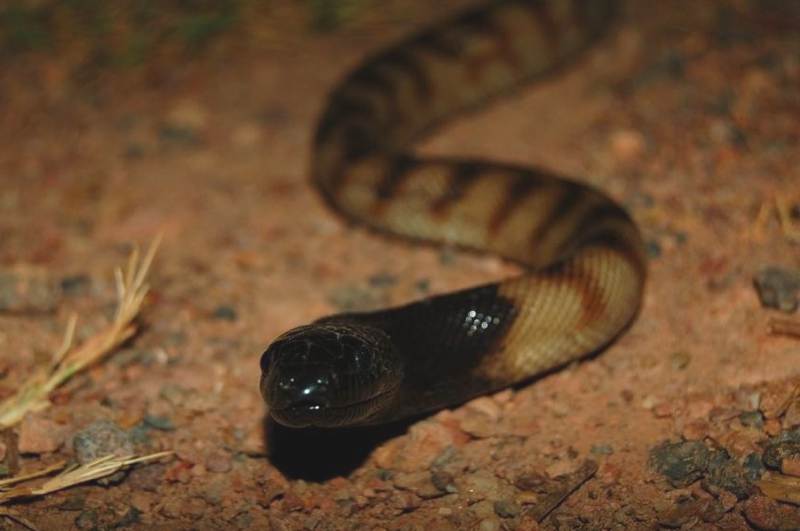
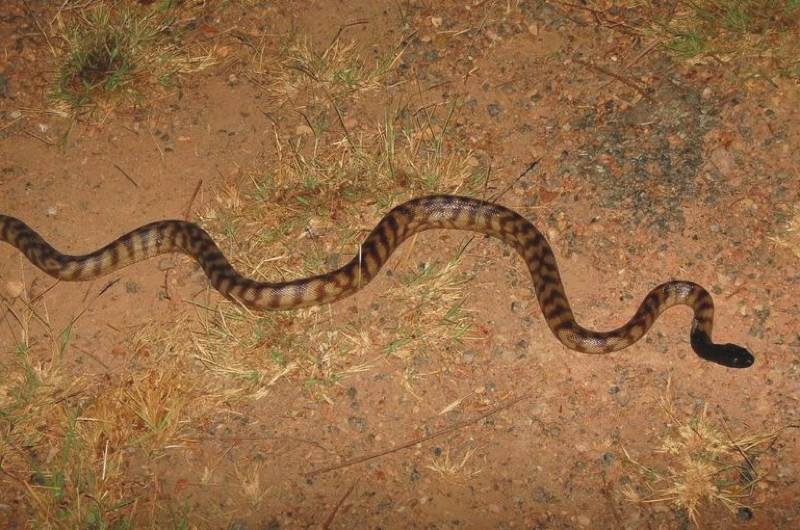
|
This rejuvenated our cruising efforts, and we
decided to make another pass or two. After a while,
and very close to where we spotted the blackhead,
another very large python was observed in the middle
of the road. In my excitement and haste to get a look
at this beauty, I forgot I was the one driving and
dove out of the Ute with the rest of the crew. This
resulted in the vehicle rolling forward precariously
close to the snake, before Peter jumped back in to
stop the rolling object. The snake was a fairly large
olive python (Liasis
olivaceus). It was fairly docile and
tolerated our photography. It was a very beautiful
animal and we spent quite a while just watching the
majestic serpent as it tried to avoid the American
photographers. We assisted it off the road and watched
this amazing creature retreat into the underbrush.
What a great night of herping!
|
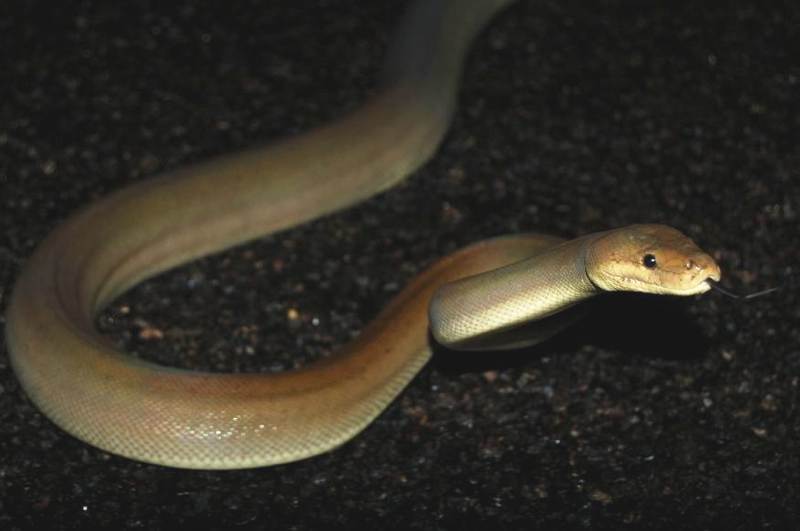
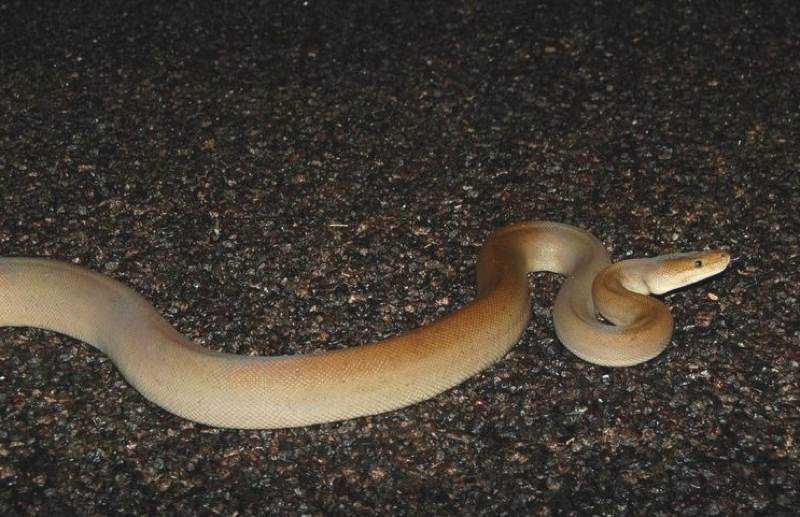
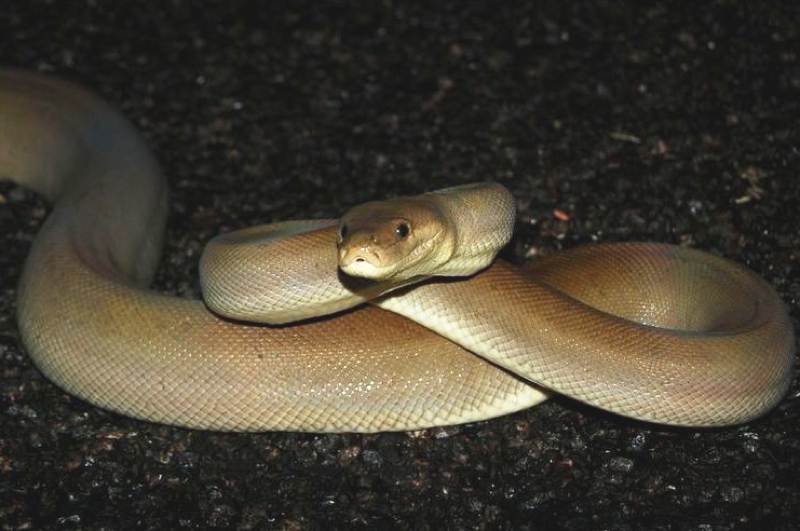
|
After the olive python, we didn't see too much
more, aside from some very attractive frog species.
The first rains had brought them out of hiding. Too
bad I don't know my frogs better. I need to get a
field guide prior to my next trip. All in all it was
one of the best nights of herping and we were all very
happy with our finds.
|
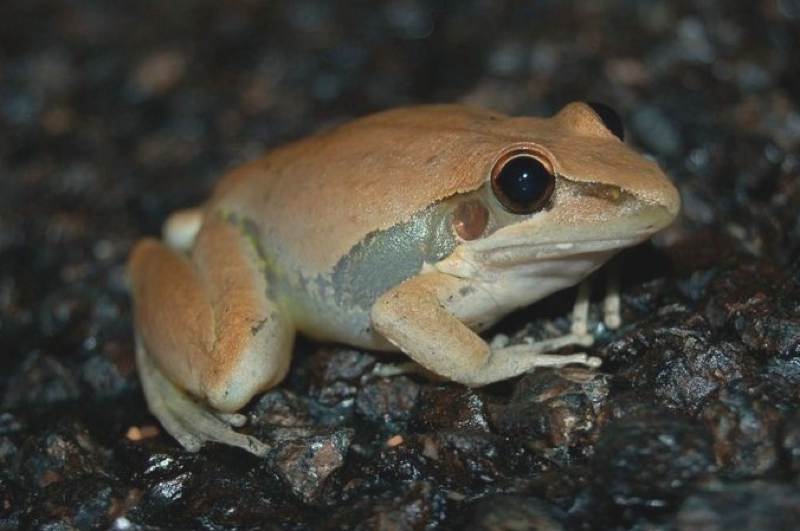
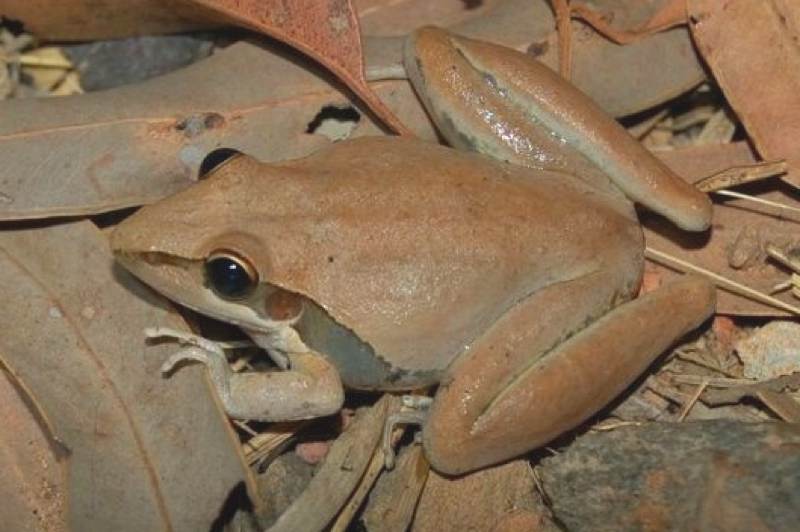
|
| Part
IV: Kakadu |



































